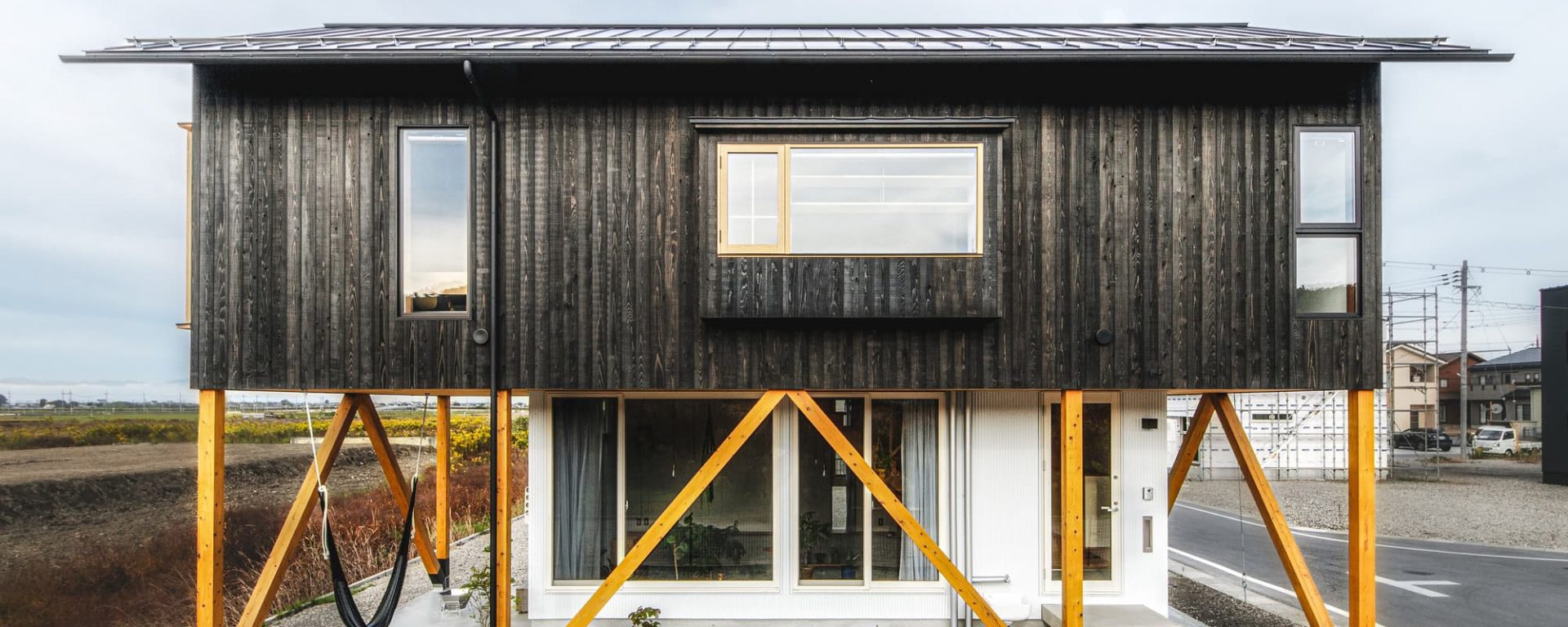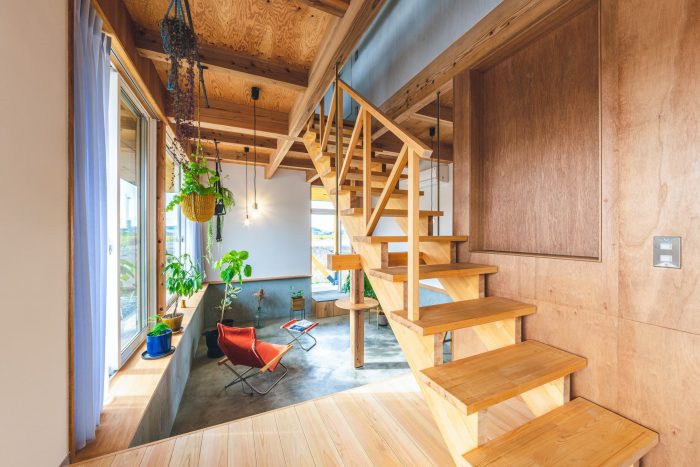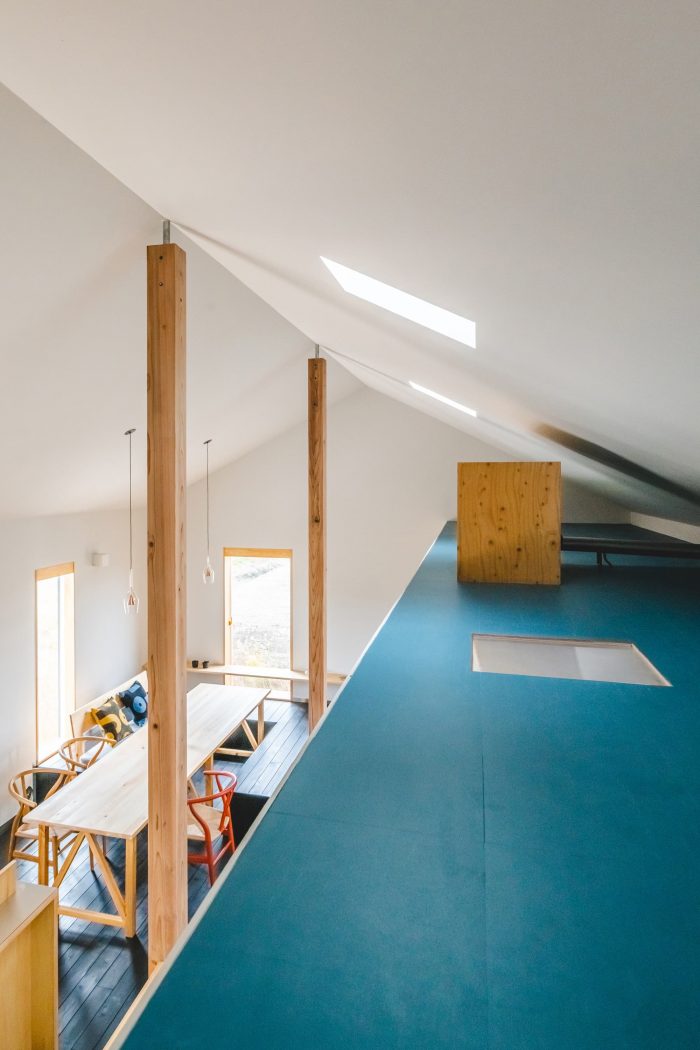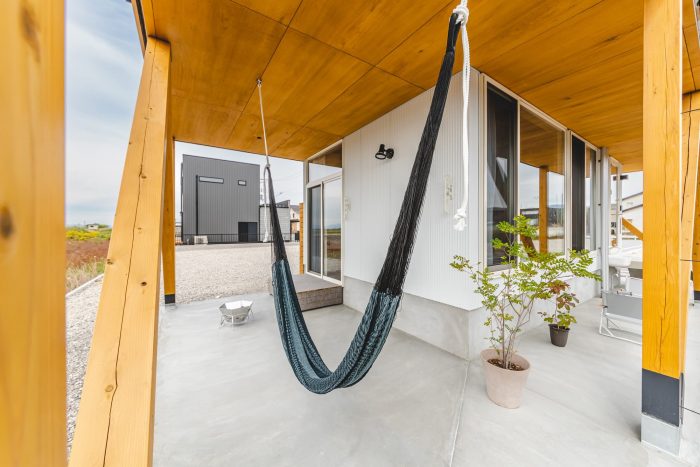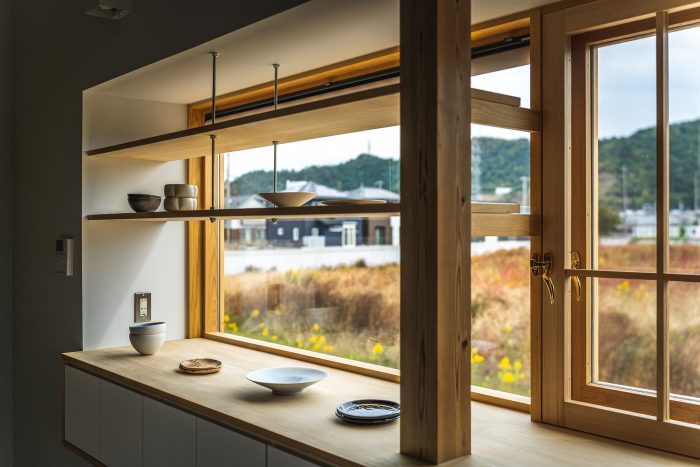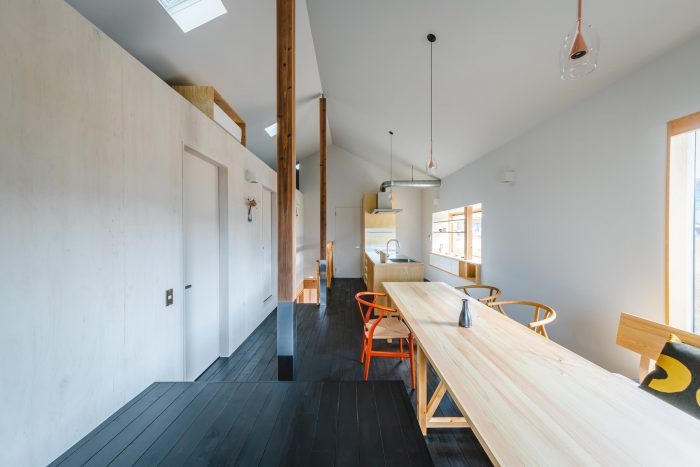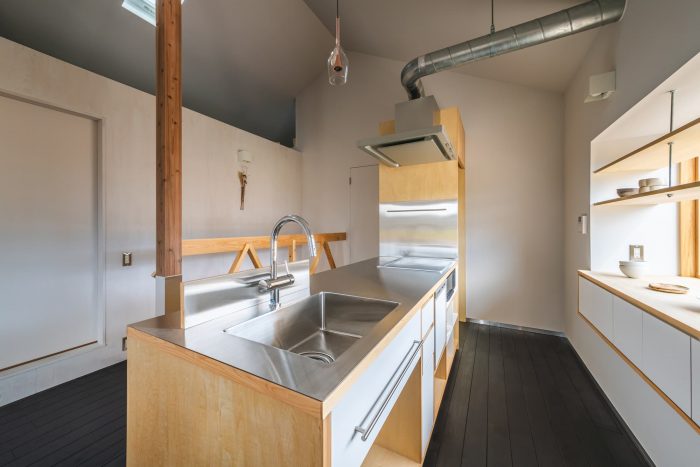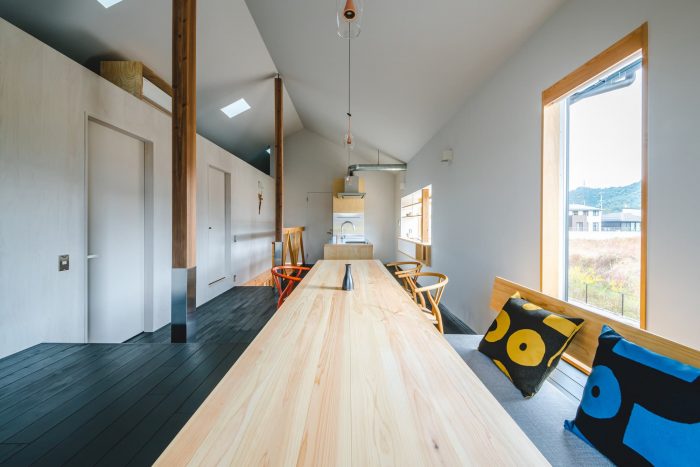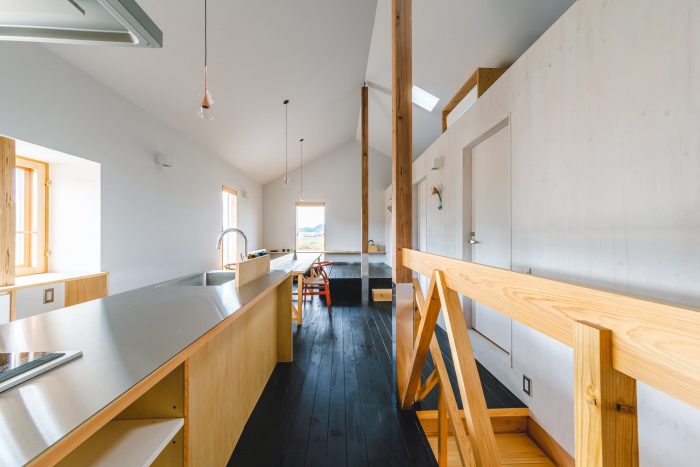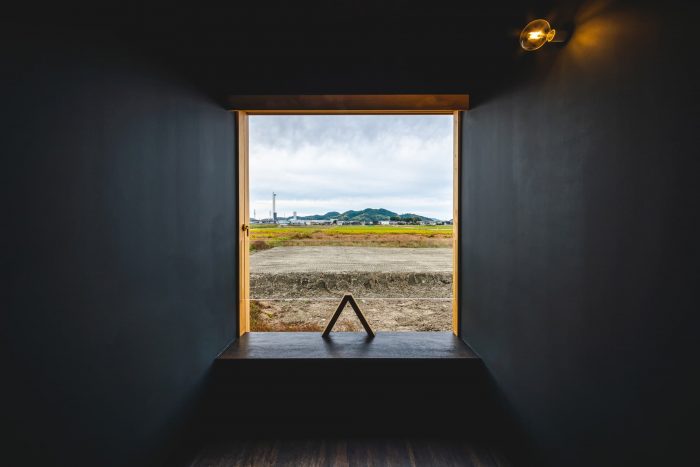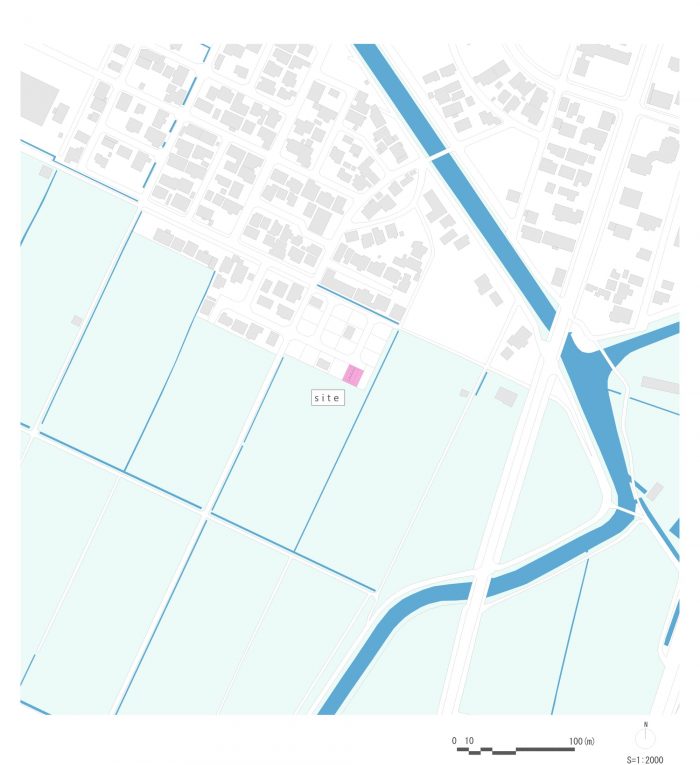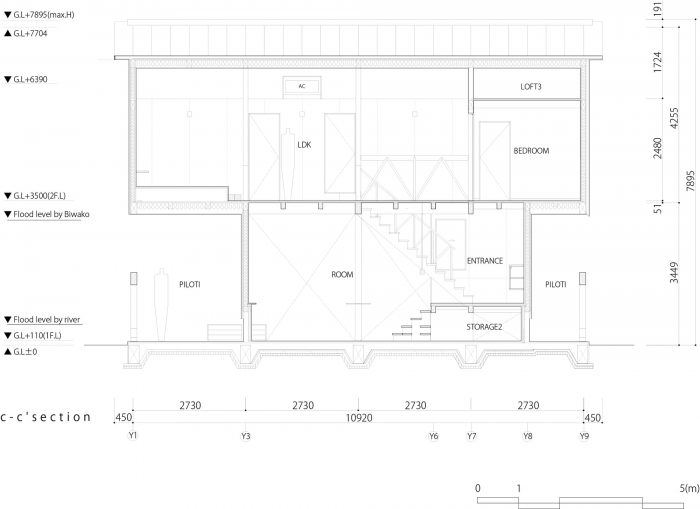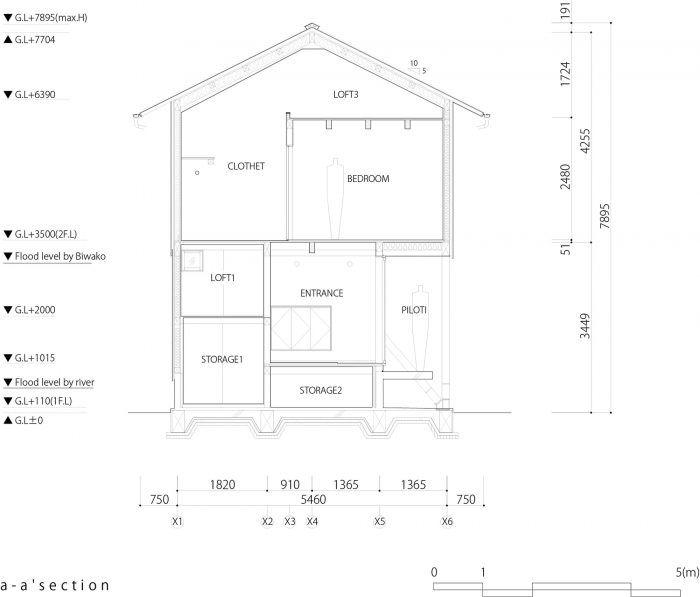这个地区是琵琶湖(日本最大的湖)的一部分。它已经变成了一个独立的湖泊,战后被埋在地下用于制造大米,最近成为一个住宅区。这意味着这里一直在自然和人工地移动。在被掩埋后,它曾一次又一次地受到洪水的侵袭,但由于防洪技术的改进和许多在日本随处可见的新住宅的建成,人们已经忘记了这些记忆。然而,由于全球变暖,这一地区有可能再次受到洪水的侵袭。或者,如果这个地区的人口继续减少,琵琶湖的水位降低,它将被芦苇覆盖。我们无法预料这个地方的未来。
This area was a part of Biwako (which is the largest lake in Japan). It had changed to an independent lake, been buried for making rice filed after World War, and become a residential area recently. It means here is always moving naturally and artificially. It had been attacked by flood time and again after being buried, but the memory of this is forgotten because the technology of flood control had been improved and a lot of new residences which are so normal that can be seen everywhere in Japan have been built. However, there is a possibility that this area will be attacked by floods again because of global warming. Or it will be covered with reeds if the population of this area continues to decrease and the Biwako’s water level is lower. We can’t anticipate the future of this site.
因此,我在设计这个房子时,意识到了两个因素,即这个地方的 “洪水和芦苇”。第一层由LDK、卧室、浴室、内部露台等组成,由对角线和垂直的木材支撑。这种结构很轻,与芦苇融为一体。楼层的水平躲过了洪水。除此以外,它还避免了这一地区的强烈潮湿。这里的气氛从外面看有点封闭,但很温暖。这是一个类似古代仓库的地方。
So, I designed this house, being conscious of two elements, which are ‘flood and reeds’ in this site. The first floor composed of LDK, bedroom, bathroom, inner-terrace, and so on are supported by diagonal and vertical wood. This structure is light and melted into reeds. The level of the floor escaped from the flood. In addition to this, it is kept from the strong moisture of this area. The atmosphere is a little closed from the outside but warm. It is something like an ancient warehouse.
在另一边,底层由piloti组成,这个房间主要像一个地球仪。这层楼很宽,也很高,可以生起篝火。像地球屋一样的房间非常明亮,向外开放,可以种植很多植物。这意味着两层楼有不同的形象和气氛。
On the other side, the ground floor consists of the piloti, and the room is like a globe house mainly. The piloti is wide and high enough to make a bonfire. The room like a globe house is so bright and open to the outside to grow a lot of plants. This means two floors have different images and atmospheres.
这个房子的材料主要是日本杉木和柏木,这些材料都是在琵琶湖地区收集的,虽然要控制和统一这些材料的质地,在当地消费并不容易。我希望虽然土地在变化,但这个房子会像船一样稳定地漂浮在水的芦苇丛中。
The materials of this house are mainly Japanese cedar and cypress which are gathered around the Biwako area, although it’s not easy to control and unify the texture of these, to consume locally. I hope though the land is changing, this house will be steady and floating in the reeds of water like a boat.
Architects: Ushijima Architects
Area : 122 m²
Year : 2022
Photographs :Shinya Tsujita
Lead Architects : Takahiro Ushijima
Program / Use / Building Function : House
Country : Japan

